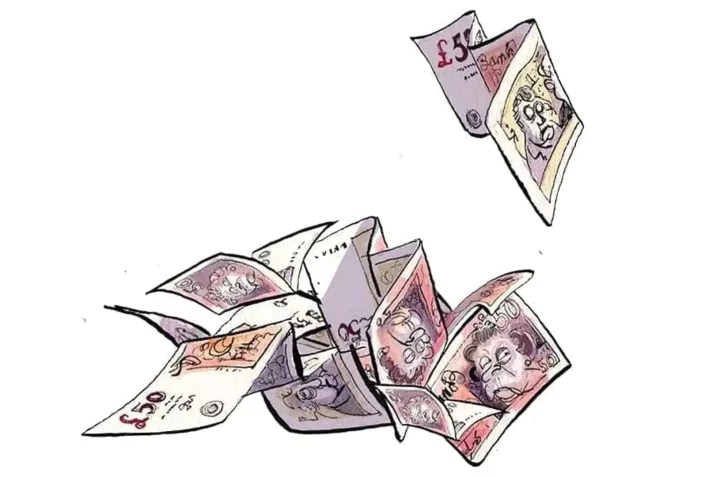Rishi Sunak ruffled his own party’s feathers last week when – in reference to last autumn’s market turmoil – he told an audience in Lancashire: ‘You’re not idiots, you know what’s happened.’ This was quickly interpreted as the Prime Minister branding the MPs and business leaders calling for immediate tax cuts as ‘idiots’, sparking not only backlash but also another round of debates on a topic that has been dividing the Tory party since last summer. Just how quickly and aggressively can the party start to cut the tax burden down from its 72-year high?
Today’s public sector finance update for the month of December certainly doesn’t settle this debate, but it does help to explain why Jeremy Hunt is thought to be working towards a cautious Spring Budget – with major tax cuts saved for a later fiscal event, probably closer to a general election. It’s not simply a nervousness about spooking markets again, as Liz Truss’s government did with its mini-Budget in September; it’s that the public finances remain in a rather dire state, making the Chancellor’s pledge to have debt falling as a percentage of GDP within five years even tougher to deliver.
Last month’s public sector net borrowing figure was a staggering £27.4 billion: almost £10 billion higher than the Office for Budget Responsibility’s November forecast and £16.7 billion higher than in December 2021.
It’s the debt-interest payments that largely took December’s net-borrowing figure to its highest level since records began. And with Britain especially vulnerable to RPI-linked gilts, last month’s payments hit £17.3 billion – another record-breaking number.
The Energy Price Guarantee contributed too, with the amount the government spent on subsidies up by almost £5 billion last month compared with December 2021. This takes public sector borrowing for the financial year to December 2022 to £128.1 billion: more than £5 billion higher than in the previous financial year, yet £2.7 billion less than what was predicted by the last OBR forecast.
Borrowing was almost £10 billion higher than the Office for Budget Responsibility’s November forecast
But as Capital Economics points out, there are still three more months to go in this fiscal year. In these months, which energy support will remain in place for everyone, making it all but certain that the budget deficit continues ‘on a deteriorating path’. The Institute for Fiscal Studies estimates (based on these most recent figures) that the total cost of the Energy Price Guarantee may fall by roughly £5 billion. This is due to the substantial drop in energy costs over the past few months that was not factored in during last autumn’s forecasts.
However, this does not create meaningful wiggle room: a fall in energy prices also means a fall in tax revenue collected from the windfall tax placed on oil and gas companies last year. The IFS notes that simply curbing the hit on fuel duty in the next Budget will cost an estimated £6 billion. The benefits of falling energy prices for the public finances do not even cancel out this particular issue, let alone open the doors for serious income tax cuts.
The good news for Hunt is that the last OBR forecast assumed the worst about interest rates, as it was produced just after the mini-Budget, when market expectation put the peak at over 6 per cent. This time around, the Chancellor is likely to be working with more palatable figures, which will grant him a little flexibility. But December’s public finance update reminds us of the scale of the task as debt as a percentage of GDP hit 99.5 per cent – ‘levels last seen in the early 1960s’.
All this points to a tame Budget come March: one that will no doubt reignite the tax debate.







Comments